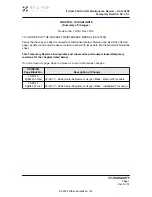
29
Big ears:
There is a lot of load on the “A’s” performing big ears especially on the faster trim settings.
We do not recommend using big ears as descent technique under power. With a hard pull
on the outermost A-lines there is higher risk of collapse. A spiral may be a more efficient
way to get down.
When in big-ears without power, the horizontal speed is higher than the sink rate, unlike a
spiral dive or a B-line stall. This rapid descent technique is used to quickly and horizontally
exit a dangerous area in the desired direction. In order to collapse the outside wing tips
called big ears pull down the outer most A-lines.
This will tuck the fabric on the outside part of the wing and start a stable descent. Keep
holding the brake handles along with the outside A1-risers in your hands. By braking on
one side and weight-shifting, the canopy remains steerable.
In order to increase the sink rate as well as the horizontal speed, this manoeuvre should be
done together with use of the speed system. Apply the speed system after big ears are
induced (step into the speed-bar before you grab the outer A1-risers). Big-ears
substantially reduce the risk of canopy stability problems in turbulent air. To exit Big-ears
release the A1-risers. The canopy will recover by it self. If not, or to quicken the recovery,
the pilot can gently apply brakes to the glider.
WARNING!
Never do big-ears in spirals. This may drastically reduce the number of lines
taking the already high loads causing structural failure.
B-line stalls:
As there is a lot of load on the “B’s” we do not recommend using B-Stall as a descent
technique under power. Performing B-Line stalls on any glider weakens the fabric by
putting unnecessary strain on the lines. It could deform the quality of airfoils and weaken it.
Содержание Charger2
Страница 1: ...1 Ze S a m u r a i...
Страница 10: ...10 TRIMMING...
Страница 35: ...35 LINE PLAN SCHEME...
Страница 38: ...38 CHECKS Name Company Date Signature Stamp...
Страница 40: ...40...










































